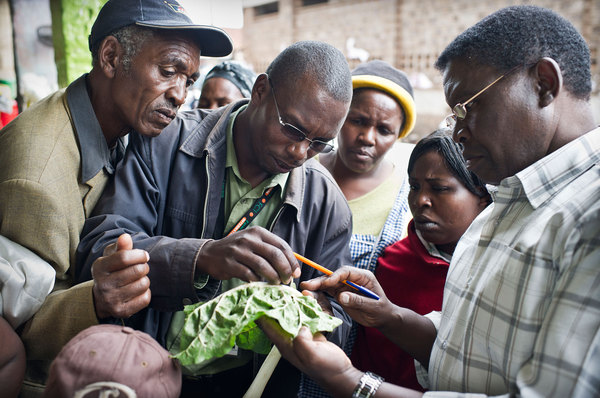Update: New Pest & Disease Records (14 Oct 15)
We’ve selected a few of the latest new geographic, host and species records for plant pests and diseases from CAB Abstracts. Records this fortnight include Nesidiocoris tenuis, a predatory species of the tomato leafminer, Tuta absoluta in Iran, the first report of Chickpea chlorotic dwarf virus infecting tomato crops in Pakistan and root necrosis assessment of plant…
Update: Plant Health News (07 Oct 15)
Here’s a taste of some of the latest stories about plant health, including the World Food Programme to tackle postharvest loss in Uganda, a key new discovery in the way that nematodes cause damage to plants and using conservation agriculture to boost wheat yields in India. Click on the link to read more of the…
Factsheet of the month: October 2015 – Grain storage in metal silos against insect pests
Last week, 193 Member States of the United Nations adopted the new Sustainable Development Agenda to end poverty by 2030. This came at the beginning of a three-day Summit on Sustainable Development during which focussed on implanting changes that will see the Agenda achieve its ambitious aims. The Agenda, consisting of 17 Sustainable Development Goals…
Update: New Pest & Disease Records (30 Sep 15)
We’ve selected a few of the latest new geographic, host and species records for plant pests and diseases from CAB Abstracts. Records this fortnight include the first report of Pepper vein yellows virus infecting red pepper in mainland China, postharvest ginger rhizome rot caused by Fusarium verticillioides in Brazil and the first report of powdery mildew…
Update: Plant Health News (23 Sep 15)
Here’s a taste of some of the latest stories about plant health, including the damage to irrigation channels caused by Chilean earthquakes, the promotion of earthworms to improve soil fertility and boost crop yields in Zimbabwe, and a severe reduction in cereal production in Central America as a result of the El Niño. Click on the link…
Tiny wasp that is having a big impact on pests in the Mekong
Rice is the most important crop in the Greater Mekong sub-region of Southwestern China, Laos and Myanmar, providing food, work and income for a diverse range of people living all along the Mekong river. However, the yield of this crop in the Mekong region is still missing the mark in terms of potential, partly as…
Update: New Pest & Disease Records (16 Sep 15)
We’ve selected a few of the latest new geographic, host and species records for plant pests and diseases from CAB Abstracts. Records this fortnight include a new record of insect pests on seedlings of Eucalyptus, the occurrence of Alternaria species on cabbage in Iran, and the dispersal, yield losses and varietal resistance of Sugarcane streak…
Update: Plant Health News (09 Sep 15)
Here’s a taste of some of the latest stories about plant health, including the researchers attempting to prevent pest beetles entering avocado crops in Mexico, the use of weaver ants in pest control to reduce pesticide use and the colonisation of crops such as lettuce with secondary pathogens. Click on the link to read more of…
Update: New Pest & Disease Records (02 Sep 15)
We’ve selected a few of the latest new geographic, host and species records for plant pests and diseases from CAB Abstracts. Records this fortnight include the First report of sheath brown rot of rice caused by Pseudomonas fuscovaginae in Korea, postharvest stem-end rot on immature coconut caused by Pestalotiopsis adusta in Brazil and the first report…
Factsheet of the month: September 2015 – Control of Black Rot in Cabbage
Black rot is considered the most important disease of crucifers across the world and can attack its host at any stage of growth. Cauliflower and cabbage are the most readily affected crucifer hosts and suffer significant yield loss as a result of the disease. On cabbage, black rot causes yellow to brown V-shaped lesions to…

